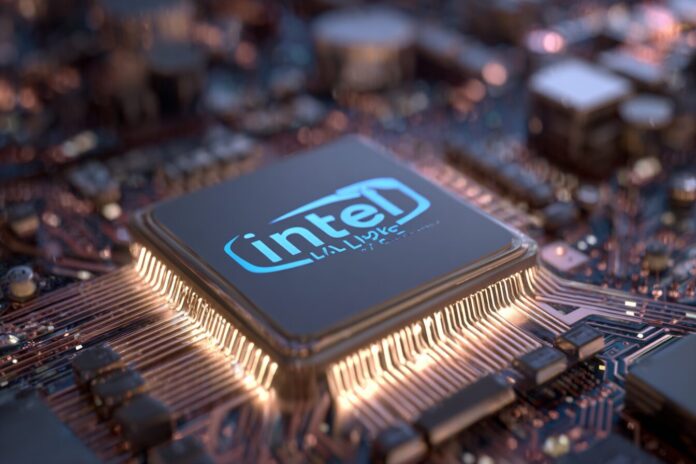Early Benchmarks Signal a New Era for Entry-Level CPUs
Most importantly, early performance tests reveal that the Intel Core Ultra 3 205 marks a paradigm shift for budget-conscious PC enthusiasts and mainstream users. Because Intel has adopted the innovative Arrow Lake-S architecture, this processor redefines expectations in the entry-level segment. In addition to faster speeds, it offers heightened efficiency that addresses both work and gaming scenarios.
Furthermore, recent comparisons show that this model not only holds its own against competitors but in many cases outpaces them significantly. Therefore, those seeking to upgrade from previous generations are now presented with a highly competitive option that delivers both improved efficiency and optimal performance.
Key Performance Highlights
The initial Geekbench 6 benchmarks place the Core Ultra 3 205 prominently in the spotlight with a single-core score of 2,664 and a multi-core score of 9,935. Because these figures translate to approximately 11% faster single-core and 30% higher multi-core performance than the Core i3-14100, more intensive tasks are handled with ease. Besides that, modern applications heavily reliant on multi-threading will benefit significantly from these performance gains.[Tom’s Hardware]
Moreover, Cinebench R23 tests further reinforce these findings. The Ultra 3 205 reportedly achieves up to 48% higher performance compared to the Core i3-14100, pushing the boundaries of what entry-level CPUs can achieve in real-world scenarios.[VideoCardz]
Architectural Advancements Behind the Performance
The revolutionary performance of the Core Ultra 3 205 can be attributed to its upgraded architecture. Because the processor integrates four Lion Cove Performance (P) cores alongside four Skymont Efficiency (E) cores, it showcases Intel’s first foray into an eight-core design in the entry-level market. This synergy of performance and efficiency cores allows the CPU to run multiple threads concurrently without resorting to traditional Hyper-Threading methods.
Most importantly, this architectural innovation enables the CPU to respond quickly to both single-threaded and multi-threaded tasks. Therefore, enhanced multitasking capabilities go hand in hand with superior power management, ensuring that the chip remains cool and quiet under load. Additional insights on this architectural shift can be found at Intel’s Performance Benchmarks.
Comparing Performance with Other CPUs
Data from Geekbench 6 and Cinebench clearly show that the Core Ultra 3 205 outperforms key rivals in its category. Below is a detailed performance comparison:
| CPU | Single-Core (Geekbench 6) | Multi-Core (Geekbench 6) |
|---|---|---|
| Core Ultra 3 205 | 2,664 | 9,935 |
| Core i3-14100 | 2,394 | 7,666 |
| Core i5-14400 | 2,345 | 10,830 |
| Core Ultra 5 225F | 2,653 | 13,028 |
| Ryzen 5 7600 | 2,749 | 12,230 |
Because each benchmark provides different perspectives on performance, the Ultra 3 205’s ability to consistently deliver faster speeds across a variety of tasks is particularly noteworthy. Transitioning from the older models to this new chip appears to be a smooth leap forward for everyday users.
Market Impact and Entry-Level Dynamics
Because of its significant improvements, the Core Ultra 3 205 is expected to attract both loyal Intel users and those looking to build cost-efficient systems. Early overseas pricing hints at a launch around $150, making it a disruptive force compared to older Intel models and even some AMD mid-range offerings. Most importantly, this competitive pricing strategy could compel rivals to innovate further, thereby enhancing the overall value proposition of entry-level processors.
In addition, the new processor serves as a prime example of Intel evolving with market changes. Therefore, users who prioritize both high performance and energy efficiency will find this CPU an appealing option. Articles on TechSpot offer further details on market trends and competitive positioning that underline this potential shift.
Should You Consider Upgrading?
Because the Core Ultra 3 205 brings both improved architecture and robust performance gains, it stands out as an excellent upgrade for a variety of users. Gamers, content creators, and home office users will appreciate the balanced design that combines power with efficiency. Therefore, this CPU is clearly a forward-thinking choice for those assembling a new PC on a budget.[TechSpot]
Besides that, the real-world benchmarks such as maintaining over 200 FPS in titles like Valorant, underscore the processor’s capability to handle both gaming and productivity tasks with ease. Because this chip provides a clear performance uplift over its predecessor, it represents a promising investment for future-proofing a computer system.
The Bottom Line
In conclusion, the Intel Core Ultra 3 205 is more than just another entry-level CPU—it is a leap forward in efficiency and multitasking prowess. With revolutionary core design and proven benchmark results, this processor paves the way for enhanced everyday computing. Transitioning smoothly from older models, it offers impressive value without compromise.
Most importantly, if the early testing trends continue post-launch, users can expect a balanced blend of power, efficiency, and affordability. For further insights, readers can refer to detailed analyses on VideoCardz and Tom’s Hardware.
References
- Tom’s Hardware: Core Ultra 3 205 flaunts 30% higher multi-core performance over Core i3-14100 in early benchmarks
- VideoCardz: Intel Core Ultra 3 205, 8-core budget Arrow Lake CPU tested, 48% faster than 14100 in Cinebench R23
- TechSpot: Intel Core Ultra 3 205 outperforms previous-gen Core CPUs in early testing
- Intel® Core™ Ultra Processors (Series 2) Benchmark Information



